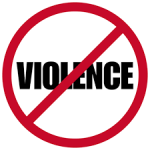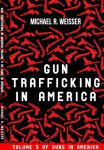It’s been a bit more than twenty years since the debate over guns really heated up. Much of the noise was due to the 1994 Clinton gun bills which the NRA and other gun-owning organizations vigorously opposed, but it also reflected a genuine concern that gun crimes and gun violence were out of control. And even though crime and gun violence rates then dropped by nearly 50% before the 21st Millennia and continue at historic lows, the argument over what I call the social utility of guns continues to grow.
The social utility of guns from a negative and a positive can be summarized as follows. On the one hand, public health researchers and gun-control advocates believe that the risks of gun ownership outweigh the gains; i.e., if you own or carry a gun sooner or later someone will get shot and the victim won’t be that bad guy trying to break down your back door. On the other hand we have the gun makers and gun-owning organizations like the NRA who just as firmly believe that virtually all gun violence is caused by bad guys with guns, and that the level of violent crime would be much higher if we didn’t have the 2nd Amendment right to own or carry a gun.
I happen to believe that the public health research on gun risk is valid. I also happen to believe that most people who keep a gun around to protect themselves would have absolutely no idea what to do if they found themselves in a position where their physical security depended on their ability to use a gun. It also doesn’t matter what I happen to believe. We accept all kinds of risks in our lives – smoking, obesity, drinking – for reasons that have absolutely nothing to do with our ability or willingness to deal with the risk itself. So who am I to say that one person’s perception of risk shouldn’t be another person’s equally valid perception of gain?
The fact is that virtually every single gun that is used in an actual or threatened shooting of another human being started out as a legal gun. And while the recent video about gun histories posted by States United was a clever way to link guns with their use in murders and assaults, the history of every single gun in that faux gun shop started off in the same, legal way. Now I can’t imagine that there’s one law-abiding gun owner out there who consciously would want one of his guns to be used to injure or kill someone else. Thanks to the NICS, I also don’t think that anything but a small percentage of guns are initially sold to someone who doesn’t legally deserve to own a gun. But if 11,000 guns are used in homicides, 140,000 in assaults and another 120,000 in robberies, then we can say with some degree of assurance that every year at least 270,000 guns fall into the wrong hands.
It’s all well and good to talk about extending background checks on the one hand, or telling kids to STOP – don’t touch – leave the area – tell an adult- on the other. But I got news for you. If 200,000 guns are stolen every year, and that’s a minimum figure, you don’t need to be a rocket scientist to figure out how easy it is for guns to get into the ‘wrong’ hands. And if anyone out there believes that the five-dollar cable locks you can pick up at your local police station courtesy of the NSSF is going to stop someone from stealing your guns, think again.
According to the Bureau of Justice Statistics, thefts of guns are nearly twice as likely to be reported than thefts of other household items of comparable value. Which means that gun owners understand the consequences of losing their guns. All the more reason why both sides should be talking about gun safety in terms of theft control, and not just arguing about the social risks versus the social benefits of owning guns.



Recent Comments